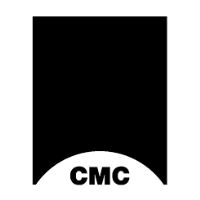Cincinnati specimen solves 180-year-old extinction mystery
FOR IMMEDIATE RELEASE: October 9, 2025
MEDIA CONTACT: Cody Hefner (513) 608-5777, chefner@cincymuseum.org
Cincinnati specimen helps solve 180-year-old extinction mystery
New research confirms the remains of last surviving female great auk are in the collection of Cincinnati Museum Center
CINCINNATI – New research published last month confirms the remains of the last living female great auk resides in Cincinnati. Researchers from Denmark, Sweden, New Zealand, Norway and the United Kingdom, working with curators and specimens from Cincinnati Museum Center (CMC), used ancient DNA and a long trail of letters, photographs and auction records to identify the whereabouts of the extinct bird with genetic certainty. The discovery was published in an article in The Linnean Society of London in September.
The great auk, Pinguinus impennis, was a flightless seabird once found across the North Atlantic. Resembling a cross between a penguin and puffin, they were a muse for famed naturalists and artists John James Audubon in the 19th century and John A. Ruthven over 150 years later. Great auks were intensely hunted for their meat, feathers and eggs, leading to their near extinction in the early 1840s. The few survivors took refuge off the coast of Iceland and it was there, on Eldey Island in the summer of 1844, that an expedition found one male and one female great auk, standing guard over a single egg. The two birds were killed and the single egg crushed, extinguishing the species. Their remains were preserved, including some internal organs, and sent to Denmark where, until recently, the whereabouts of the great auks’ skins were unknown.
Though there are 80 great auk specimens in the world, many were quickly ruled out knowing they were collected prior to the summer of 1844, when the last auks were killed. Using a scalpel, the research team took a small sample from the toe pad of CMC’s great auk specimen. Through DNA sequencing, the team compared the Cincinnati sample’s mitochondrial genome with that of the known organs of the last female great auk, currently at the Natural History Museum of Denmark, confirming CMC’s specimen is indeed the fateful last female auk.
“This study resolves a natural history mystery that has puzzled great auk scholars and those within the museum industry for over 180 years,” the authors of the study concluded. “Resolving the mystery of their whereabouts not only highlights the use of ancient DNA to resolve questions such as this but also provides a long sought-after conclusion to the story of great auk extinction.”
Cincinnati has an unfortunate history with extinct birds. Martha, the last passenger pigeon, died at the Cincinnati Zoo & Botanical Garden in 1914. The last Carolina parakeet died in the Cincinnati Zoo four years later in 1918. The great auk continues a legacy of extinctions attributed to humans.
The great auk in Cincinnati
The great auk’s journey to Cincinnati is a story of family heirlooms and auction houses on both sides of the Atlantic Ocean. English naturalist George Dawson Rowley purchased the female great auk specimen in 1869 after it had traded hands multiple times in Denmark after it was killed and preserved in 1844. After Rowley’s death in 1878, he left both the male and female specimen to his son, who then sold it at auction in 1934. Captain Vivian Hewitt, an aviator and ornithologist, purchased the specimens and kept them at his home in the Bahamas until his death, when they were auctioned off once again. A donor purchased the female specimen at auction in November 1974, though they believed it was truly the male specimen, and donated it to the Cincinnati Museum of Natural History, a predecessor organization to Cincinnati Museum Center. It wasn’t until 1993 that the gender of the now-Cincinnati specimen was corrected in a letter to the museum's zoology curator from a seabird expert who more closely traced the bird’s journey to the museum.
The Cincinnati Museum of Natural History put the great auk on display in 1976 in a diorama painted by Ruthven, but moved the specimen into its ornithology collections when the museum relocated to Union Terminal in 1990. There it serves as a tangible peek into natural history and continues to offer insight into the impacts of humans on the extinction of species as DNA sequencing and analysis reveals more information.
Cincinnati Museum Center at Union Terminal
-
Cody Hefner Marketing Manager
- October 09, 2025
- (513) 287-7054
- Send Email

